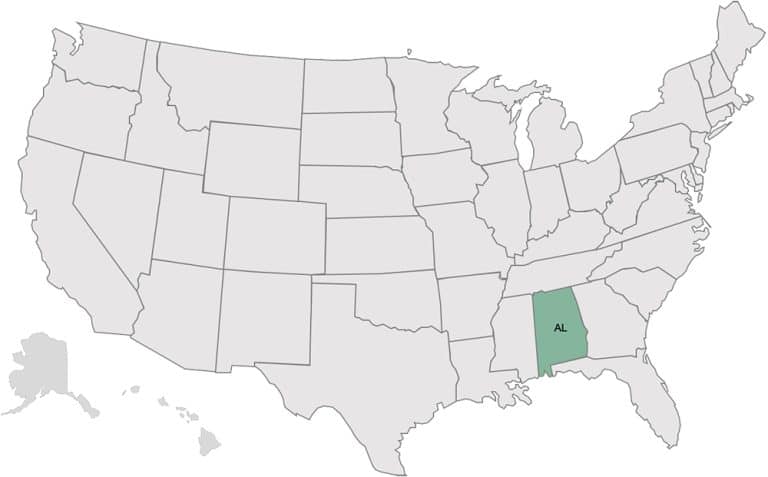Word on the street > AE Industry Intelligence: Issue 93
AE Industry Intelligence: Issue 91

In This Issue
Inside The Mind Of The CEO
It was an important day for the new CEO of AE2Env+. Her firm—an ENR Top 100 full-service architecture, engineering, environmental, construction services, and surveying/mapping leader—had closed out 2021 with its tenth acquisition in five years. In doing so, the firm had realized the four most important goals of its Vision 2022 five-year strategic plan. Those goals were to (a) have offices in all 50 states, (b) be full-service, (c) have a 50/50 split between public- and private-sector work, and (d) “be a billion-dollar firm that clients and employees are passionate about.”
The day had started well. She had completed Wordle in three guesses (a personal best). Then her assistant had scored her two VIP tickets to the Kenny Chesney concert in Nashville over Memorial Day weekend—a great way to entertain the firm’s biggest client.
She now sat in her corner office in the firm’s stunning, self-developed and self-designed headquarters in Miami. She was about to deliver her first “state of the firm” virtual address—an exciting way to kick off the new year. Her AV team had set up the lighting and sound just right to beam her remarks to the firm’s thousands of employees in their offices, in their homes, and on job sites from Hawaii to Maine. Her presentation had been carefully prepared by her chief of staff and vetted by the firm’s marketing director. They had laid out a series of bullet points for her to hit. While she trusted both of them to craft a pitch-perfect presentation that covered all of the high points she wanted to convey, she also knew that neither they nor anyone else fully understood exactly what she was thinking as she read their words from the teleprompter.
The lights went on full. The producer counted down, “3, 2, 1…” The teleprompter rolled. She smiled, looked straight into the camera, and began—“Good morning!”
- Another record year: “I want to say a big ‘thank you’ to each of you for all of your hard work this past year. It’s because of your collective efforts that 2021 was yet another record year for our firm. Sure, we saw some weakness in our operations in Ohio, Pennsylvania, and New York. And yes, we saw a number of our big federal contracts stop as a result of the new administration’s change in priorities. However, the remarkable performance in virtually every other sector—particularly land development, renewables, hospitality, water, and transportation—across all of our service lines made 2021 a year to remember.” (Beyond the firm’s financial performance over the past five years, she was even more proud of the fact that the firm’s Client Net Promoter Scores (NPS) and employee survey results were higher than ever. Both of these were areas that she had championed internally as being equally important to “the dollars.”)
- Stock value up 40%: “With another strong year under our belts, 2022 shaping up nicely, our backlog at an all-time high, and being well positioned to take advantage of the recently passed infrastructure bill, it’s no surprise that our stock price has been appraised at 40% higher than last year. This is terrific news for shareholders!” (It sure was. The firm’s stock price had seen annual double-digit growth over the past five years. And indeed, the latest appraisal is what triggered the resignation of the former CEO who decided to sell his 30% of the firm’s shares at what he thought was a high point, while at the same time handing the CEO slot to her. She worried that the stock price was increasing at such a pace that it was becoming unaffordable for newer shareholders. It seemed like the firm’s accelerating stock value was outpacing the ability of new shareholders to acquire it. She also was recently hearing more rumblings from older shareholders who were concerned about the burden that the former CEO’s buyout would place on cash flow over the next decade. She was 100% committed to employee ownership of the firm, and she assumed her board, leadership, and employees were too.)
- Team growth: “I’m thrilled to report that despite the acute talent shortage in our industry, we added over 200 employees in 2021. Our new hybrid work policies created the opportunity for over three-quarters of our new hires to work remotely—something we never considered possible in the past. I’m proud of the work that our chief people person, IT director, and their teams have done to make this a reality.” (She chose not to discuss the fact that 5% of the firm’s staff had left—either resigning or quitting—in January alone. The firm was seeing a serious brain drain as older professionals were retiring earlier than ever, and turnover was up in general across all demographics. Compounding the situation was wage inflation. Over half of the firm’s new hires were new grads. In some cases, they were paying these entry-level professionals $80,000 plus signing bonuses. This was creating angst and resentment with longer-tenured, more-experienced professionals and technicians, resulting in morale issues and more turnover.)
- The importance of our One AE2Env+ initiative: “With our most recent acquisition, we are now truly a full-service firm with offices in every state. But our clients will only see the full benefits of our business model if we act as a single collaborative team that shares resources and opportunities across all of our services and proactively helps each other to improve our firm every day. With all of us on the same page, nothing can stop us improving the lives of our clients and employees!” (In truth, it had been a tough year for the “one firm” concept, and it wasn’t getting any easier. It seemed like almost every topic and decision had become politicized—and not even the firm’s shared values that she and her team had worked hard to put in place over the last decade could bring everyone together. While many of the firm’s offices were vibrant and 100% full of employees, an almost equal number remained half-empty or less. Office managers from cities in the Northeast and Midwest were reporting that many employees simply didn’t want to commute to offices anymore and were either uneasy or reluctant to meet with peers or clients in person. This was going to complicate the “one firm” dynamic that was at the heart of the firm’s strategy for success. It also raised questions about just what was the AE2Env+ culture.)
- ESG front and center: “A priority for all of us here at AE2Env+ in 2022 will be elevating awareness of our Environmental, Social, and Governance (ESG) responsibilities and scores. This will be critical for our success going forward and super important to our engagement with clients and communities.” (She was skeptical about “this whole ESG thing.” She understood the rationale for it—and indeed she was a big supporter. She saw the firm’s publicly traded competitors promote their ESG scores and awards. She understood that it could be a positive from a talent recruiting perspective. But, in her conversations with clients and her banker she found a collective cynicism about the whole movement and a willingness to only pay lip service to it. While citing ESG scores as important in selecting consultants, clients mostly turned a blind eye to them. Bankers liked to declare how much it factored into their lending decision-making, but over dinner would confess it mattered not at all.)
- New tech venture: “I’m really excited about the launch of our new tech venture, DigiAE2Env+. This digital offering came directly from one of the teams in our tremendous Emerging Leaders program. This product will allow us to deliver digital solutions to our clients and differentiate ourselves from our competition. We envision a tech-enabled future for the industry, and we intend to be on the forefront!” (She didn’t believe the financial projections for DigiAE2Env+, but she did believe it was imperative for the firm to move beyond its traditional “sell professional and technical time at different hourly rates for money” business model. But there were so many mixed messages. This new digital venture was burning through cash and apparently would not be profitable for three years—best-case scenario, but who really knew? The 27-year-old internal champion for the product had never run a P&L, and the firm’s CFO had zero experience with tech products. Clients said they were interested in digital solutions but also were ambivalent about actually paying for them (something to discuss at the Kenny Chesney concert). The competition was rolling out digital and tech ventures—she saw the ENR Top 20 firms making more and more tech acquisitions—but she knew that FOMO was not a strategy.)
- Important message on new firm-wide software: “The folks in the IT department have asked me to remind you that we will all be transitioning to Salarya over the next three months. However, payroll will remain in Bullfrog (except, of course, for folks in the Western Region, who will continue to log into Expensitize). Please continue to use Fireplayce for timesheets. Input all new client information into Infoseeker (NOT ClientSwift, which is no longer supported, except in Version 2.1). Please do NOT upload project images to Peekabu for legal reasons.” (She longed for a simpler time. She remembered paper timesheets and expense reports. She still missed rows of steel filing cabinets and the smell of the “copy room”—universal features of a time past, known to, and understood by, everyone. Now the firm seemed like a casbah of software offerings that came and went, never quite fulfilling their promise of “enterprise-wide” nirvana. (On that note, she promised herself that once she retired, she’d never use the phrase “enterprise-wide” ever again.) She worried constantly about when any of this software could be breached (it probably already was) and the implications of a ransomware attack. She’d heard the horror stories from her peers.)
- In conclusion: “I could not be prouder of all that we have achieved together this year for our clients and communities. I know that for many of you 2021 was a challenge for many reasons. We are stronger now than we have ever been, and we head into the new year on the balls of our feet with great tailwinds behind us. My door (both real and virtual) is always open, so please feel free to reach out to me directly with any questions or suggestions you might have. I would love to hear from you! Thank you!” (Every day she thought about how blessed she was to have had a career in the AE industry where her firm helped shape, improve, and protect the built and natural environments. Today was no different. She’d do it all over again if she had the chance.)
M&A up 33% year over year: This week saw the announcement of 15 new transactions of AE and environmental firms in the U.S. in CA, FL, ID, IL, MI, MS, NJ, NY, OR, SC, and TX.
If you thought January was a super-busy month for M&A, you were correct! Here are the 10 transactions announced in January that the Morrissey Goodale M&A team helped make happen.
Questions? Insights? What do you think your CEO is really thinking? Email Mick Morrissey at [email protected] or call him at 508.380.1868.
Can’t Decide? Try Something Different
I hear some leaders say, “I trust him. He makes decisions the way I do.” A company where everyone makes decisions like the boss might be what some owner-managers want, but maybe it would be better to aim for everyone making sound decisions as they deal with clients, prioritize their work, and commit company resources. Decisions are made or not made throughout the day by everyone in your firm. And most of those decisions fly under the radar. People at all levels in the company go about their jobs doing what they think is best, what they’ve done before, or what is convenient.
While we have numerous methods for weighing alternatives to choose a best alternative, most people are not trained to make decisions. We don’t know of any public K-12 school that teaches decision making. Nor do we know of any college programs that teach the most basic of skills to make a decision. We learned to make decisions following the actions of our family and friends—never understanding the basic principles. In fact, even centers of decision research often can’t concisely state how a decision is to be made. It wasn’t until the early 1980s that the fundamental rule of decision making was discovered in the work of Jim Suhr, an engineer for the U.S. Forest Service. He stated that decisions must be based on the importance of advantages.
As simple as that sounds, it is a radical idea. Our common practice is to give importance to factors rather than advantages. For instance, how do you think a person would answer the question, “Which is more important in the design of a bridge: cost, aesthetics, or safety?” You’re right in guessing that virtually everyone answers, “Safety.” The correct answer is, “The question can’t be answered.” It’s unanchored. Looking at the fundamental rule above, we can’t determine importance until we have found advantages.
There is a sound decision making approach that can be learned in a short time. It’s called the Choosing by Advantages (CBA) decision-making system. It was developed by Jim Suhr and features sound methods for all kinds of decisions from very simple to exceedingly complex.
Typical decision-making methods in use today do not qualify as sound methods. They either cause or encourage critical mistakes, such as omissions of relevant facts, multiple counting, distortions of facts, or distortions of viewpoints. Pros and cons, advantages vs. disadvantages, and any method weighing factors, attributes, criteria, objectives, characteristics, or consequences are all in use (and often misuse) today.
A sound method is one that uses correct data and uses the data correctly, and CBA is sound. There are a number of reasons why that is important. Sound decision-making:
• Saves time
• Results in better outcomes
• Results in better use of resources
• Increases buy-in
• Reduces arguing and stress
Before explaining how CBA works, here are a few key terms to note:
Alternative: A possible choice.
Factor: An element or a component of a decision. A container for criteria, attributes, advantages, and other types of data.
Criterion: A decision rule or guideline.
Attribute: A characteristic of one alternative. An attribute is neither positive nor negative, except in comparison with another attribute.
Advantage: A difference between two alternatives.
The two key questions to answer by using CBA are:
How large are the advantages of each alternative?
How important are the advantages of each alternative?
The first question is objective—it pertains to the advantages. It’s not a judgment call. The second question is subjective—it pertains to the intensity of someone’s preferences.
The steps are straightforward and can be captured in a simple spreadsheet—or even in your head once you get really good at it. They include:
1. Listing the alternatives
2. Identifying the factors
3. Summarizing the attributes
4. Deciding the advantages of each alternative
5. Deciding the importance of each advantage by applying a numeric score
6. Choosing the alternative with the greatest total importance of advantages
Once those steps are taken, it’s time to challenge and reconsider by asking the following:
• Are there any other alternatives that should be considered?
• Are there any additional factors to consider?
• Are there any other advantages that should have been included?
• Do the importance scores accurately represent the viewpoints of the stakeholders?
The next time you have a tough decision to make, try Choosing by Advantages. Even if you use this sound method sloppily, you’ll still end up with a better result than using an unsound method precisely.
If you’d like to see an example of CBA, call Mark Goodale at 508.254.3914 or send an email to [email protected].
50 in 50: Alabama
50 states in 50 weeks: U.S. states economic and infrastructure highlights.

Key Economic Indicators
GDP: $243.6 billion
GDP 5-year growth rate (2017-2021): 3.2% (U.S.: 3.9%)
GDP per capita: $48,341 (U.S.: $68,276)
Population: 5 million
Population 5-year growth rate (2017-2021): 0.8% (U.S.: 0.5%)
Unemployment: 3.1% (U.S.: 3.9%)
State’s financial health ranking: 33 out of 50
State’s overall tax climate ranking: 41 out of 50
Key Sectors and Metro Areas
Top five industry sectors by 2021 GDP:
Top three industry sectors by GDP 5-year CAGR (2017-2021):
Top three metro areas by GDP:
- Birmingham-Hoover
- Huntsville
- Mobile
Top three areas by population 5-year CAGR (2016-2020):
- Daphne-Fairhope-Foley
- Huntsville
- Auburn-Opelika
Infrastructure Highlights
Infrastructure: ASCE Infrastructure Grade (2021): C–
Alabama has a high percentage of roads in good condition but is above U.S. average on vehicle operating cost per motorist. It is among the states with most need for improvement in drinking water infrastructure. The Infrastructure Investment and Jobs Act (IIJA) will make the following funds available over the next five years:
Construction spending (Value of Construction Put in Place – CPiP):
- Private Nonresidential CPiP: $5.2 billion; 14.2% 5-year growth rate (2016-2020) above overall U.S. growth rate of 2%
- State & Local CPiP: $3.8 billion in 2020; 3.1% 5-year growth rate (2016-2020) below overall U.S. growth rate of 4.8%
AE Industry
ENR 500 firm headquarters (2021): 5
M&A activity since 2018:
- 25 deals with AL buyers
- 13 deals with AL sellers
For customized market research, contact Rafael Barbosa at [email protected] or 972.266.4955. Connect with him on LinkedIn.
Subscribe to our Newsletters
Stay up-to-date in real-time.










